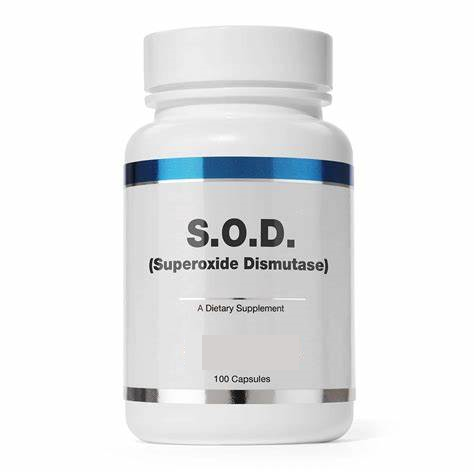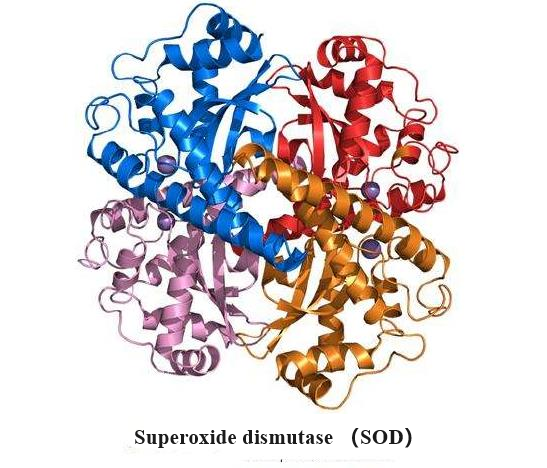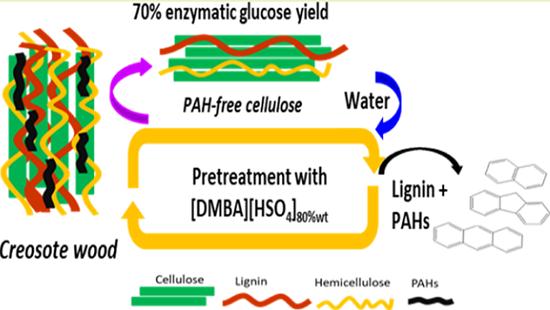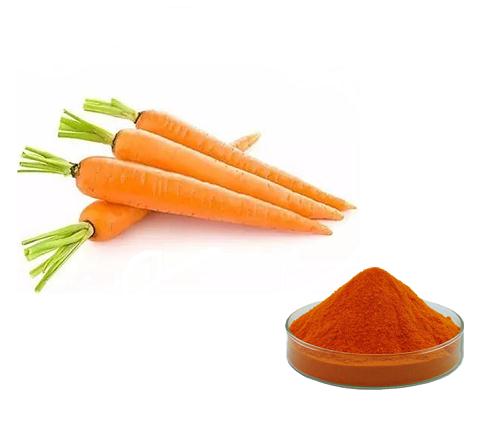Application of Superoxide dismutase
Generally speaking
SOD (Superoxide Dismutase) is a general term for a series of enzymes. It is an active substance derived from living organisms and can eliminate harmful substances produced by organisms in the process of metabolism. It can effectively curb free radicals, capture free radicals, decompose free radicals, with high strength and accurate targeting. It is the only scavenging enzyme that uses free radicals as substrates. Superoxide dismutase preparations are used for biochemical research, and are commonly used clinically for the treatment of systemic lupus erythematosus, dermatomyositis, rheumatoid arthritis, scleroderma, autoimmune hemolytic anemia, thrombocytopenia and other autoimmune diseases , the treatment of certain cardiovascular diseases, for anti-aging.
Physicochemical properties
The main function of superoxide dismutase is to specifically remove superoxide anion O-2 in the body, so as to relieve the damage to the body caused by the oxidation of oxygen anion in the body. Its half-life is short, usually only 6 to 10 minutes. The relative molecular mass is large, it is not easy to penetrate the cell membrane, and it is easily inactivated by the action of proteolytic enzymes when taken orally. Therefore, clinical application is limited. The enzyme is an acidic protein, which is relatively stable and heat-resistant. Stable at pH 7.6 to 9, unstable below pH 6 and above 12. Extremely unstable especially below pH2. It has strong resistance to pepsin and trypsin hydrolysis. It has no immunomodulatory and analgesic effects, nor does it affect the synthesis of prostaglandins and other inflammatory mediators.
Application
Predicts Persistent Circulation Failure and Mortality in the Early Stage of Acute Pancreatitis
Objectives Oxidative stress is an important event in the pathogenesis of acute pancreatitis. Superoxide dismutase is a major antioxidant enzyme in the body. The aim of this study was to investigate the changes in superoxide dismutase activity early in the onset of acute pancreatitis and its value in predicting the risk of organ failure and mortality. Methods Data for 2549 patients hospitalized from 2013 to 2017 were extracted from the prospective database, and we selected 854 adult patients who were admitted within 24 h of disease onset with complete data. Serum superoxide dismutase activities on the first, second, and third days of hospital admission for patients with different severities, organ failure, and mortality were compared. The areas under the curve for the prediction of organ failure, pancreatic necrosis, and mortality were estimated using receiver operating characteristic curves. Results Among the 854 adult patients, superoxide dismutase activities were significantly different among patients with mild acute pancreatitis, moderately severe acute pancreatitis, and severe acute pancreatitis (P = 0.005). Superoxide dismutase activity was significantly decreased in patients with persistent renal failure (77.8 +/- 37.2), persistent circulatory failure (66.2 +/- 14.9), and mortality (64.3 +/- 16.0). The accuracy of superoxide dismutase with regard to predicting persistent circulatory failure and mortality was high, and the areas under the receiver operating characteristic curves were 0.83 and 0.84, respectively. Conclusions Superoxide dismutase activity was negatively correlated with the severity and clinical outcome of AP. Superoxide dismutase activity is highly accurate at predicting persistent circulation failure and mortality in the early stage of AP [1].
Role in young adults with gastroesophageal reflux disease and autoimmune thyroiditis
The purpose of the work was to study the levels of the Klotho protein and mitochondrial superoxide dismutase in young patients with a comorbid course of gastroesophageal reflux disease and autoimmune thyroiditis. Study conducted 165 students: 120 with gastroesophageal reflux disease and autoimmune thyroiditis and 45 with isolated gastroesophageal reflux disease. Klotho protein and mitochondrial superoxide dismutase were studied in blood serum by enzyme immunoassay. The study of mitochondrial superoxide dismutase and Klotho protein showed a significant increase in these indicators in patients with gastroesophageal reflux disease and autoimmune thyroiditis in comparison with the control group and the group with isolated gastroesophageal reflux disease. The Klotho protein and mitochondrial superoxide dismutase can be used as biomarkers of gastroesophageal reflux disease progression in young patients with concomitant autoimmune thyroiditis [2].
Concentration/activity of superoxide dismutase isozymes in context of type 2 diabetes
The alterations in concentration/activity of superoxide dismutase isozymes in the context of type 2 diabetes or obesity are well-described. Moreover, many hereditary factors, including single-nucleotide polymorphisms (SNPs) of genes for coding insulin, insulin receptors, or insulin receptor substrates (INS, INSR, IRS1, IRS2) or superoxide dismutase isozymes (SOD1, SOD2, SOD3), have been linked with the incidence of obesity and dia-betes. However, the underlying changes in the plasma concentration/activity of superoxide dismutase isozymes and their potential connection with the said hereditary factors remain unexplored. Previously, we have observed that the plasma concentration/activity of superoxide dismutase isozymes differs in the context of obesity and/or rs2234694 (SOD1) and rs4880 (SOD2) and that the concentrations of SOD1, SOD2, SOD3 are correlated with each other. Intersexual variability of SOD1 concentration was detected regardless of obesity. In this study, the variability of concentration/activity of superoxide dismutase isozymes in plasma is considered in the context of type 2 diabetes and/or SNPs: rs2234694 (SOD1), rs5746105 (SOD2), rs4880 (SOD2), rs927450 (SOD2), rs8192287 (SOD3). Genotypic variability of SNP rs3842729 (INS), previously studied in the context of insulin-dependent diabetes, is investigated in terms of selected clinical parameters associated with type 2 diabetes. This study revealed higher SOD1 concentration in diabetic men compared to women, and extremely high SOD1 concentration, higher total superoxide dismutase, and copper-zinc superoxide dismutase activity, and lower superoxide dismutase and copper-zinc superoxide dismutase activity (when adjusted for the concentration of SODs) in the diabetic group regardless of sex. Multiple logistic regression, applied to explore possible links between the studied SNPs and other factors with the odds of type 2 diabetes or obesity, revealed that the genotypic variability of rs4880 (SOD2) could affect these odds, supporting the findings of several other studies [3].
Relationship of superoxide dismutase to rotator cuff injury/tear
Rotator cuff degeneration is one of the several factors that lead to rotator cuff tears. Oxidative stress and superoxide dismutase have been reported to be related to rotator cuff degeneration; however, the precise mechanism still remains unclear. In this study, we investigated the relationship of oxidative stress and superoxide dismutase to the degeneration of the rotator cuff using rat models. Eighty-four rats were used to create a collagenase-induced rotator cuff injury model (injury model) and a rotator cuff tear model (tear model). The controls were administered saline and had only a deltoid incision, respectively. We evaluated degeneration morphology of the rotator cuff using a degeneration score; dihydroethidium fluorescence intensity, which detects oxidative stress; gene expression; and superoxide dismutase activity. The rotator cuffs in the injury and tear models significantly increased degeneration scores and dihydroethidium fluorescence intensity. On the other hand, gene expression of superoxide dismutase isoform, superoxide dismut
Related articles And Qustion
See also
Lastest Price from Superoxide dismutase manufacturers
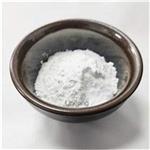
US $6.00/kg2025-04-21
- CAS:
- 9054-89-1
- Min. Order:
- 1kg
- Purity:
- 99%
- Supply Ability:
- 2000KG/Month

US $0.00-0.00/KG2025-04-21
- CAS:
- 9054-89-1
- Min. Order:
- 1KG
- Purity:
- 95% up by SDS-PAGE analysis
- Supply Ability:
- 20 tons

